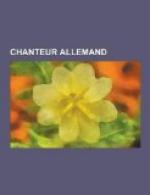|
This section contains 333 words (approx. 2 pages at 300 words per page) |
World of Scientific Discovery on Hans Fischer
Hans Fischer devoted his scientific career to studying the pigments in plants and animals that make life possible--the hemoglobin that carries oxygen through our blood and gives it its red color, and the chlorophyll that makes plants green and enables them to convert the sun's energy to food.
Fischer grew up learning the chemistry of color; while he was still young, his father became director of a chemical dye works in Germany. After earning a medical degree as well as a doctorate in chemistry, Fischer worked at several German and Austrian universities as a laboratory assistant and professor. In 1921 he became an organic chemistry professor at the University of Munich. There he began to study bilirubin, an organic pigment, which turns the skin of people suffering from jaundice yellow. Fischer discovered that bilirubin contains hemin, a component of the hemoglobin molecule. After much meticulous work trying to synthesize bilirubin, Fischer succeeded in taking the hemoglobin molecule apart and discovered that the heme part of the molecule is made of four pyrrole rings, each containing four carbon atoms and one nitrogen atom. These rings are linked into a larger ring that surrounds a single atom of iron. By 1929 Fischer had synthesized hemin, a milestone that won him the 1930 Nobel Prize in chemistry.
Fischer turned next to chlorophyll, which had been studied by Richard Willstätter in the early 1900s. Fischer 's research on chlorophyll's structure--which turned out to be similar to hemoglobin's--led him to believe that the two molecules have a common evolutionary history. During the 1930s Fischer analyzed the subtle differences between chlorophyll and hemoglobin molecules, determining that chlorophyll's pyrrolic structure contains magnesium, whereas hemoglobin's contains iron. Fischer's research in hemoglobin and chlorophyll eventually enabled him to accomplish what he had originally set out to do--synthesize bilirubin.
During World War II Fischer remained in Germany although he had reservations about the war. When his laboratory was virtually destroyed by Allied bombs in 1945, he killed himself in a fit of despair.
|
This section contains 333 words (approx. 2 pages at 300 words per page) |


